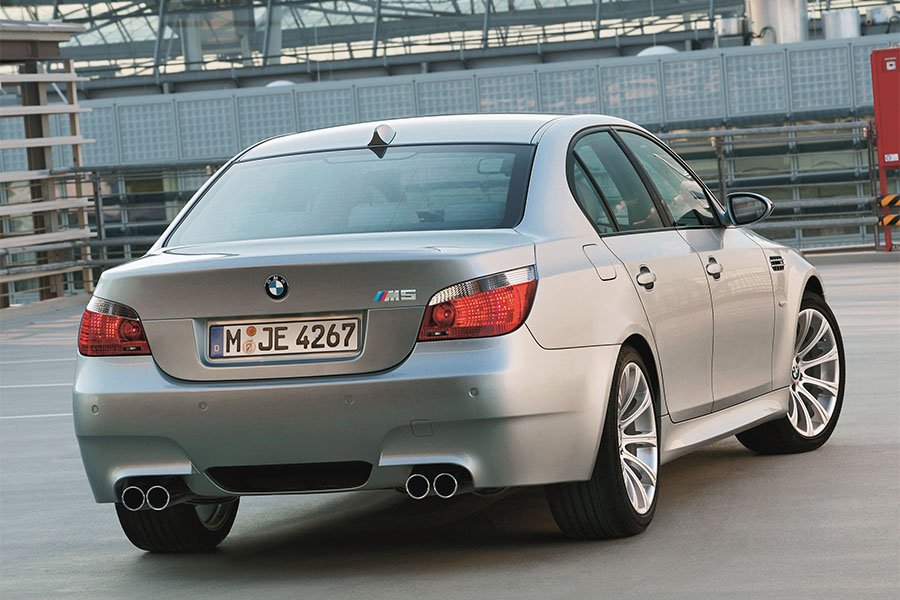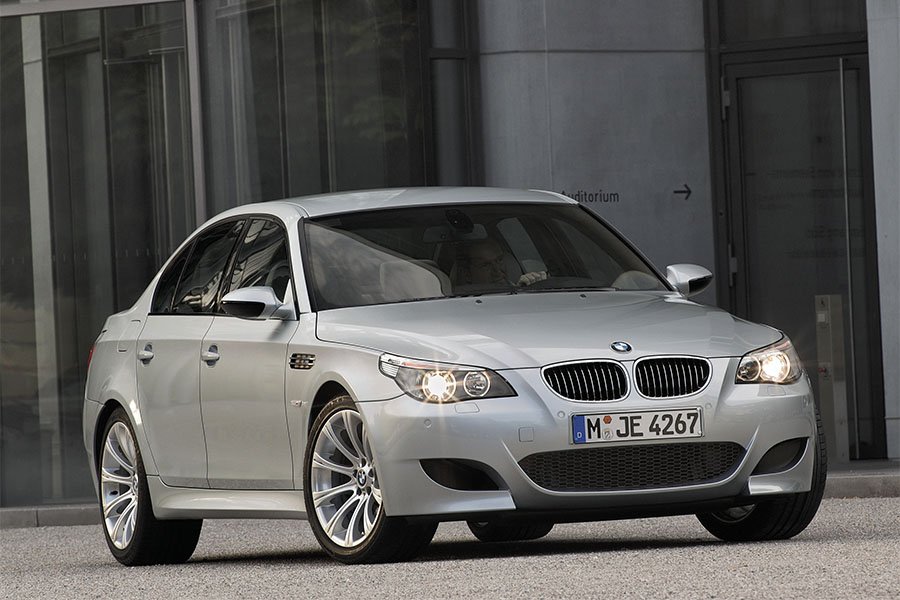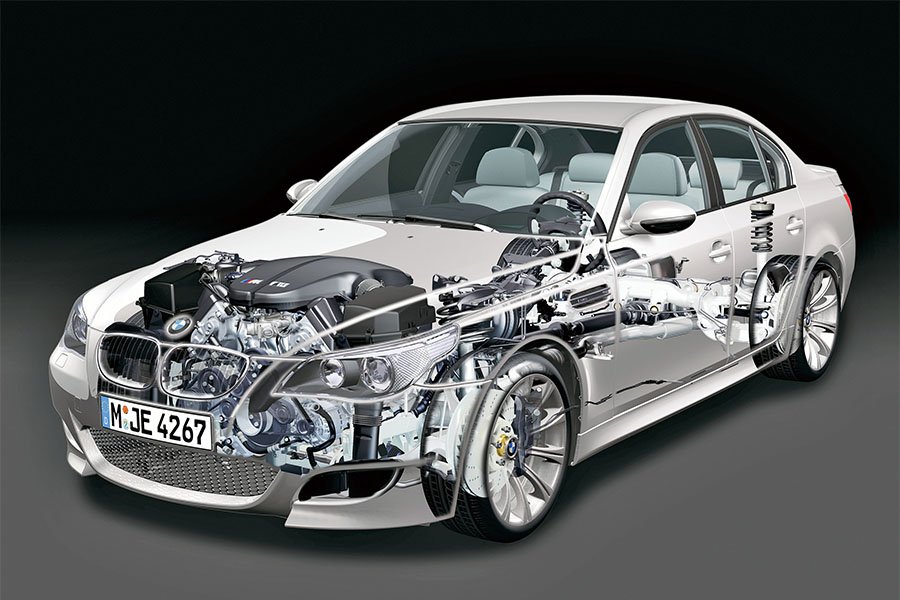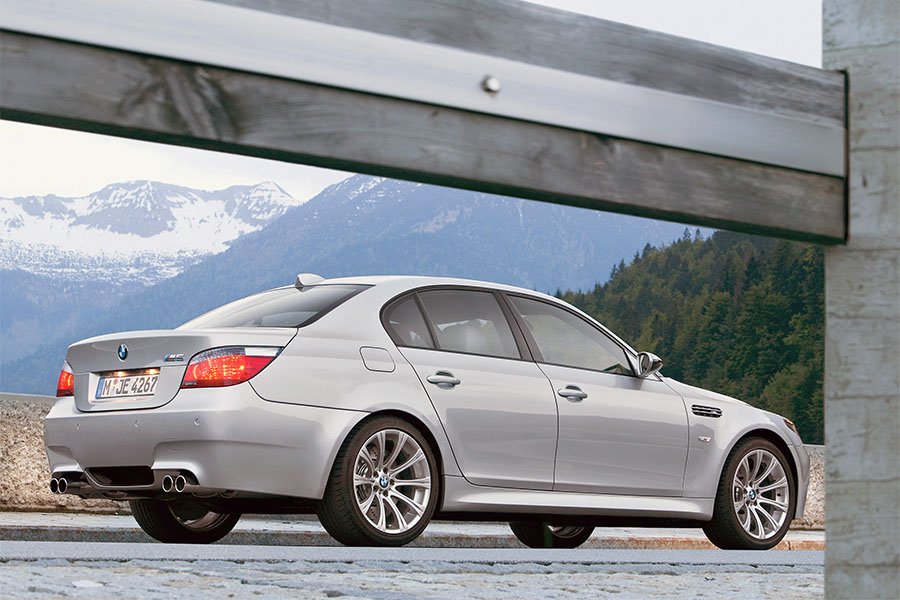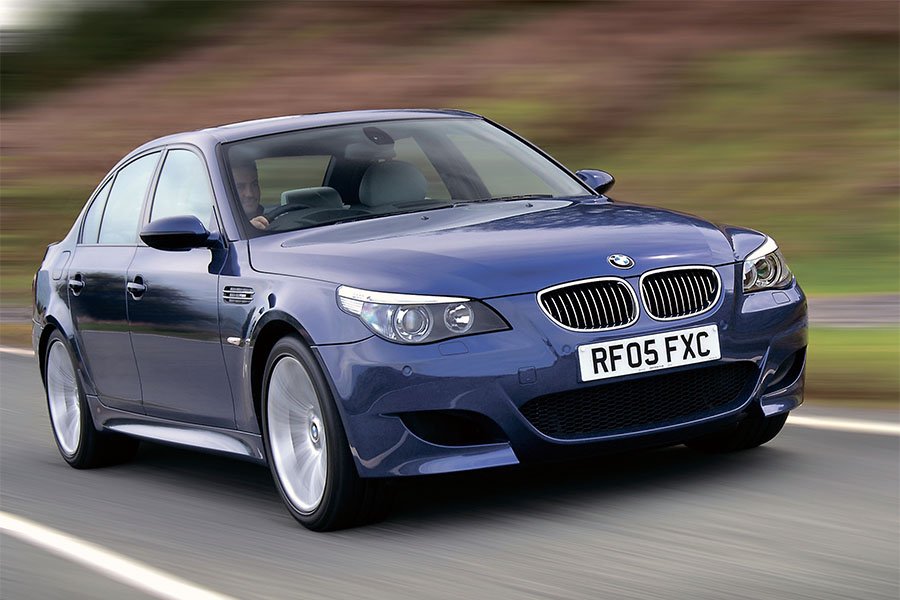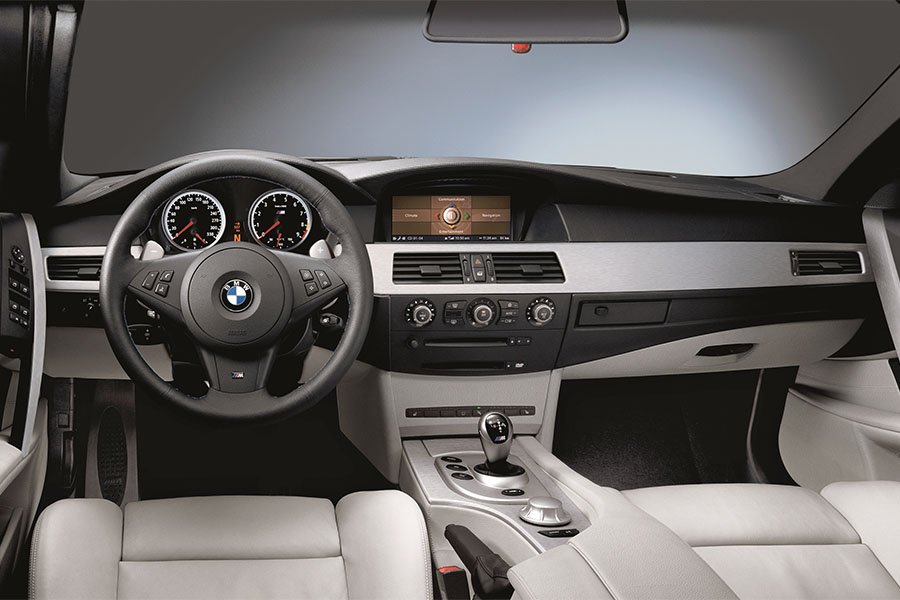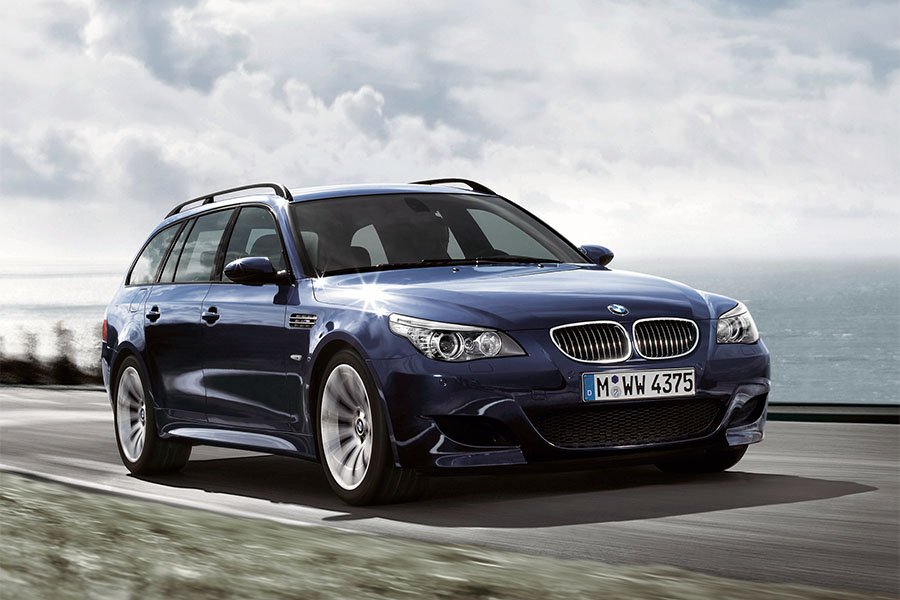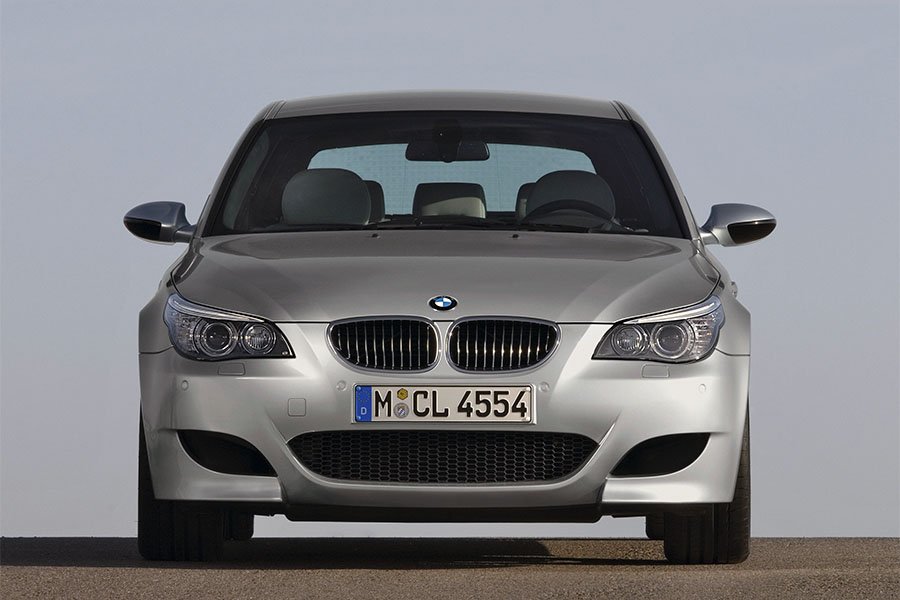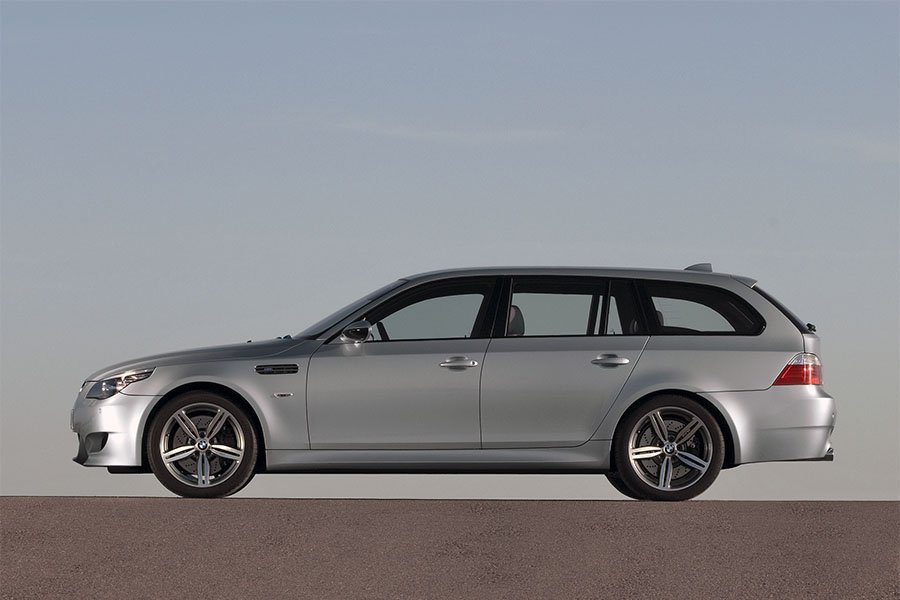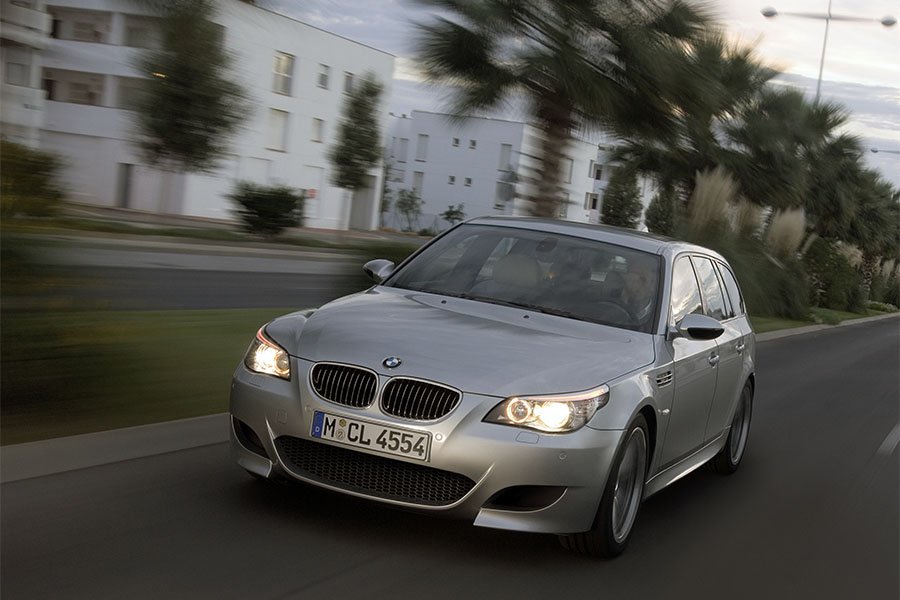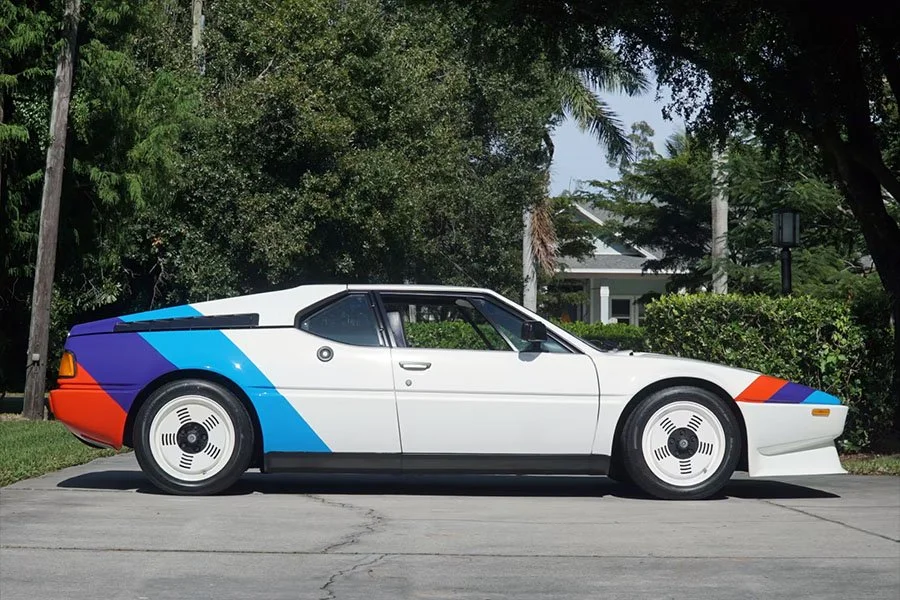Guide: BMW E60 M5 Saloon & E61 M5 Touring - a Historical & Technical Appraisal
/BACKGROUND
By the early 2000s, BMW had produced four different iterations of the critically acclaimed 5-series: the original E12 of 1972 was replaced by the updated E28 in 1981 which was in turn followed by the E34 of 1987 and most recently the E39 of 1995.
Whereas Mercedes’ mid-range models were normally fitted with automatic gearboxes and generally appealed to customers that wanted a refined cruiser, the 5-series was often purchased as ‘The Ultimate Driving Machine’.
Over at the BMW Motorsport facility in Garching, specially enhanced versions of each 5-series had come to be regarded as the benchmark mid-size performance Saloons. They offered barn-storming performance in a discrete package that belied their true capabilities. In terms of usability, they were typically the fastest off-the-shelf family cars available.
To supersede the E39 5-series, which in M5 trim had featured BMW Motorsport’s first V8 engine, BMW launched the new E60 variant online in July 2003.
The E60 was initially available as a Saloon with straight six engines of 2.2 (520i), 2.5 (525i) and 3-litres (530i). There was also a 4.4-litre V8 (the 545i). An Estate body style (the E61 Touring) subsequently followed in late 2004 for the 2005 model year.
Also introduced for the 2005 model year was the highly anticipated new M5 which BMW unveiled in production trim at the Paris Motor Show in September 2004. This latest M5 arrived six months after a concept had been displayed at Geneva where it garnered an extremely enthusiastic response.
In addition to its exciting F1-inspired five-litre V10 (the most powerful production engine in BMW’s history), the E60 M5 broke with convention on account of its seven-speed semi-automatic SMG gearbox; previous iterations of the Motorsport 5-series had always been offered with a conventional manual shifter.
Somewhat counter-intuitively given the affection for auto ‘boxes across the Atlantic, the only markets to get a manual M5 were the US and Canada when a North American version was introduced in September 2005.
An E61 M5 Touring was subsequently unveiled at the Geneva Motor Show in March 2007, but was not offered in North America.
Both the E60 M5 Saloon and E61 M5 Touring were built on BMW’s regular 5-series production line at Dingolfing.
CHASSIS
Each new M5 started life as a standard E60 5-series galvanised steel monocoque. To this, BMW fitted modified front and rear subframes and an uprated thrust plate to protect the oil pan and further increase rigidity.
At 2880mm the wheelbase was 50mm longer than the outgoing E39 M5.
The existing all-aluminium suspension layout was retained with MacPherson struts up front and a multi-link arrangement at the back. The geometry was suitably optimised for this high performance iteration and the rear suspension links were adapted from the type used by the Z8 Roadster.
To improve handling, the M5 came with recalibrated spring rates, stiffer bushings and thicker anti-roll bars.
There were also trick Electronic Damping Control and Dynamic Stability Control systems (EDC and DSC respectively).
Electronic Damping Control constantly adapted the stiffness of the shock absorbers to the road conditions. In addition, the driver could manually select one of three shock settings (Comfort, Normal and Sport) either via the MDrive button on the steering wheel or a button located alongside the SMG lever.
Dynamic Stability Control worked in conjunction with the M Variable Differential Lock fitted as standard. Like earlier iterations of DSC, engine power was automatically adjusted along with individual wheel braking to improve stability.
In addition, this latest evolution of DSC came with Brake Standby (which automatically moved the pad to the disc in preparation for had braking during sudden throttle lift) Brake Drying (which automatically moved the pad against the disc in the event the rain sensor detected any pad moisture) and Start-Off Assistant (which held the brakes for one second after the driver's foot was removed from the brake pedal in uphill conditions).
If required, the DSC thresholds could be adjusted via M Dynamic Mode or switched off entirely.
An MDrive function allowed the driver to further configure the car’s settings with regard to the SMG Drivelogic gearbox software (eleven modes), engine power (two modes), throttle response (three modes) and the Servotronic variable assistance power steering (two modes). MDrive could also be used to adjust the trio of alternative modes for the aforementioned EDC and DSC systems.
Compared to the previously range-topping 545i, the M5’s ventilated brake discs were now cross-drilled and substantially bigger. The fronts went from 348mm to 374mm (with dual piston calipers) and the rears went from 345mm to 370mm (with single-piston calipers).
ABS was fitted as standard.
The unique 19-inch diameter M Radial Spoke 166M cast alloy wheels were 8.5-inches wide at the front and 9.5-inches wide at the rear. Unlike other E60 and E61 models, the Michelin Sport tyres used on the M5 were of a conventional non run-flat construction.
A standard 70-litre fuel tank was installed under the rear seat.
ENGINE / TRANSMISSION
Although the E39 M5 had been the first BMW Motorsport product to feature a V8 instead of a four or six cylinder engine, company executives were keen to capitalise on the firm’s engine supply deal with the Williams Formula 1 team. Accordingly, the E60 M5 came with a brand new F1-inspired BMW Motorsport-designed five-litre normally aspirated 90° V10.
Designated Type S85 B50, it featured an all-alloy construction with dual overhead camshafts, four valves per cylinder, a semi-dry-sump lubrication system, a forged five-bearing crankshaft and high-pressure double VANOS variable valve timing.
To reduce mass, BMW Motorsport added flow-optimised 5mm shaft valves, spherical valve tappets with hydraulic valve play compensation, single valve springs, lightweight valves and hollow camshafts. To further increase the engine’s responsiveness, simultaneously actuated and electronically-controlled individual throttle assemblies were added for each cylinder.
Displacement was 4999cc thanks to a bore and stroke of 92mm and 75.2mm respectively.
The compression ratio was set at 12.0:1.
A state-of-the-art MSS65 DME engine management system was capable of 200 million operations per second.
Peak output was 500bhp at 7750rpm and 384lb-ft at 6100rpm.
For comparison, the outgoing E39 M5 had produced 394bhp at 6600rpm and 369lb-ft at 3800rpm.
Driver’s could select from one of three alternative drive modes via a Power button mounted alongside the SMG lever.
The default P400 mode limited the engine to 400bhp and adopted the standard throttle response algorithm. P500 mode freed up the full 500bhp and also quickened the throttle response. P500 Sport mode (accessible via the MDrive button on the steering wheel) gave an even sharper throttle response.
The E60 M5 was the first BMW Motorsport product not to be offered with a conventional manual gearbox. Instead, the new car came with BMW’s third generation Sequential M Gearbox (SMG III) which became the first seven-speed sequential put into production by any manufacturer.
As per previous iterations of the SMG transmission, SMG III allowed the driver to shift gears via F1-style paddles mounted behind the steering wheel or a centrally located lever. There was also a fully automatic mode. The new system also offered a choice of eleven shift maps (six manual and five automatic). Shift times were said to be 20% faster than before and there was also a launch control facility.
The mechanical Variable M Differential Lock was effectively an updated limited-slip diff. It pressurised a viscous silicon fluid when there was a difference in rotational speed between the rear wheels and then activated a multi-disc clutch that directed more power to the wheel with the greatest traction.
Hollow halfshafts unique to the M5 were fitted to save a little weight.
BODYWORK
Having established a reputation for elegant but conventional styling in the decades prior, BMW’s design team had made a significant departure with the avant-garde E65 7-series launched in 2001.
The E65’s controversial ‘flame surfacing’ approach utilised BMW’s new 3D panel press technology; in the past, compound curves had required multiple pressings unless the panel was shaped by hand.
Design work for the E61 5-series was executed in a broadly similar albeit slightly toned down fashion to the E65.
As ever, this latest BMW Motorsport offering came with an array of special equipment to differentiate it from lesser variants.
Instead of a full width aperture, the M5’s re-profiled front bumper assembly housed a trio of separate much bigger intakes plus unusual corner-mounted spoilers. The fog lights fitted to the rest of the E60 range were deleted to maximise air flow.
Down each flank were subtly flared wheelarches, engine cooling vents carved from each front fender, aerodynamically profiled two-tone black and body colour exterior mirrors and deep side skirts.
At the back was a new rear trunk lid that featured a discrete fully integrated lip spoiler and flat instead of concave lower fascia around the licence plate. The back bumper assembly was also new. As per the front it was more aggressively styled; a large central diffuser was flanked by skirted flaps that partially shrouded the twin exhaust tips per side.
An M5 badge was added to the right-hand tail fascia and to each of the front fender-mounted engine cooling grilles.
INTERIOR
Like the new 5-series’ exterior, its cockpit was a more restrained interpretation of the ultra modern E65 7-series.
At the heart of the cabin was an iDrive infotainment system with a dash-mounted 6.5-inch LCD screen through which the majority of the car’s functions were accessed via a transmission tunnel-mounted rotary switch.
The three-spoke steering wheel with M tricolour stitching was a unique M5 feature. Behind it were a pair of large analogue gauges: a 330kmh / 200mph speedometer with integrated fuel read out and a 9000rpm M-branded rev counter with combined oil temperature display.
Located around the M-branded SMG shifter were buttons for the Power mode, DSC and EDC.
Electric M Sport seats (an option on the rest of the E60 range) were fitted as standard along with Extended Merino leather in a choice of three colours: Black, light grey Silverstone II or Light Sepang Bronze. In standard trim, leather was used to cover the seats, door panel inserts and all the armrests. The headliner was trimmed in Anthracite cloth.
Brushed Aluminium Shadow inserts were fitted throughout.
Other features unique to this E60 flagship were M5-branded sill plates and an M Design driver's footrest.
The long list of standard equipment included a full complement of airbags, satellite navigation, heated front seats, remote central locking, automatic air-conditioning, a DAB audio system with six disc CD shuttle, rain-sensing headlights, tyre pressure monitoring, parking sensors with pictogram display, cruise control, remote trunk and fuel filler releases, a shark fin roof aerial and adaptive bi-Xenon headlights.
OPTIONS
At no additional cost, M5 buyers could specify rear spoiler delete, M5 badge delete, chrome or shadow line exterior trim and metallic paint.
Standard in some markets but optional in others was a 6 x 3-inch head-up display that projected details of road speed, engine speed and gear selection onto the windscreen.
Customers could further enhance their M5 with forged 167M alloy wheels from the M6, alcantara headlining, Madeira walnut wood trim, natural olive wood trim, a universal remote control, TV function, BMW Online, Bluetooth, lumbar support, rear seat heating, tinted glass, protective glazing, heat insulated glass, sunblinds, climate comfort laminated glass and active front seat ventilation.
Multifunction front seats with active headrests and lower side bolsters that automatically tightened under lateral loads were also available along with complete Merino leather and complete perforated Merino leather. The complete leather options added hide to the dash, upper and lower door panels and the centre console. Complete leather could be specified in one of five colours: Black, Silverstone II, Light Sepang Bronze, Indianapolis Red and Portland Brown.
WEIGHT / PERFORMANCE
Despite its bigger bodyshell and enormous V10 engine, the E60 M5 weighed only 45kg more than the outgoing E39 variant (1830kg as opposed to 1795kg).
The 0-62mph time dropped from 5.3 to just 4.7 seconds.
Top speed was once again electronically limited to 155mph.
North American Version
In September 2005 (for the 2006 model year) BMW introduced a North American version of the M5.
Uniquely, customers from this region could specify their car with a traditional six-speed manual instead of seven-speed SMG transmission.
Cars ordered in manual trim came with a ZF Type G gearbox as fitted to the 550i (to include the same ratios). However, the M5’s significantly shorter 3.62:1 final drive ratio was retained. If the head-up display was also specified with a manual transmission it came without a gear selection function.
Instead of a tyre pressure monitoring system, cars bound for North America featured a flat tyre monitor.
2006 MODEL YEAR
In addition to the arrival of a North American M5 for the 2006 model year, BMW dropped the traditional ignition key in favour of a stop-start button.
Six months later (in March 2006) an auxiliary input was added to the audio system.
2007 MODEL YEAR
For the 2007 model year (production of which began in September 2006) BMW began to offer a High Definition audio system and introduced an enhanced navigation system.
MID 2007 MODEL YEAR PRODUCTION CHANGES & E61 M5 TOURING
Mid-way through the 2007 model year (from March 2007) an M5 Touring was added to the model line up.
Aside from thicker anti-roll bars, the M5 Touring was to the same specification as the Saloon. At 1955kg it weighed 125kg extra.
From this point both body styles came with new headlight and upper tail light internals, redesigned interior door panels and some minor switchgear alterations to include programmable memory buttons for the iDrive system.
A number of new options were also introduced to include comfort instead of sports seats, a heated steering wheel, soft close doors, a 16 speaker audio system and iPod / USB adapter.
2008 MODEL YEAR
More new options were introduced for the 2008 model year (produced from September 2007) to include high beam assist and switchable DSC for manually equipped North American variants.
2009 MODEL YEAR
The 2009 model year (produced from September 2008) saw the introduction of an updated iDrive controller.
2010 MODEL YEAR
For the last year of production in 2010 (manufactured from September 2009) BMW introduced an improved iDrive 2.0 system with enhanced 3D graphics and a hard drive instead of disc-based navigation system.
Cars bound for certain markets also now came with BMW ConnectedDrive internet capability and a BMW EfficientDynamics brake energy regeneration system.
25TH ANNIVERSARY EDITION
Between November and December of 2009, BMW produced a batch of 25th Anniversary cars. Created to celebrate 25 years since the first E28 M5 arrived, this small run of special edition variants were mechanically standard but came with matte Frozen Grey paint from the BMW Individual programme and door sill plates inscribed with M5 25th Anniversary logos.
Customers could choose from one of two special upholstery combinations: complete Black Merino leather with Light Grey stitching or two-tone Black and Silverstone complete Merino leather with Light Grey stitching. The exception to this was cars bound for the UK which came with standard complete Black Merino leather.
Just 27 examples were built in total: 24 E60 Saloons (13 left-hand drive and eleven right-hand drive) and three E61 Tourings (all of which were left-hand drive).
END OF PRODUCTION
E60 M5 Saloon production ran from September 2004 until December 2009, by which time 19,564 examples had been completed.
E61 M5 Touring production ran from March 2007 until April 2010 and totalled 1025 units.
These figures were split as follows:
LHD Euro market M5 Saloon (09/04 to 12/09) 6427 built
RHD Euro market M5 Saloon (03/05 to 12/09) 3646 built
LHD North American market M5 Saloon (09/05 to 12/09) 9491 built (1366 with six-speed manual)
LHD Euro market M5 Touring (03/07 to 04/10) 803 built
RHD Euro market M5 Touring (03/07 to 02/10) 222 built
Production of a replacement, the Saloon-only F10 M5, began in September 2011.
Text copyright: Supercar Nostalgia
Photo copyright: BMW - https://www.bmw.com


